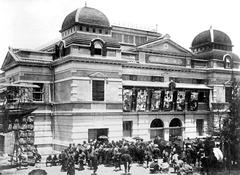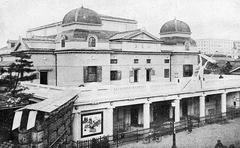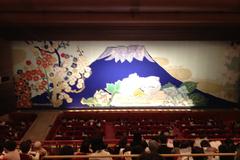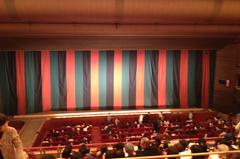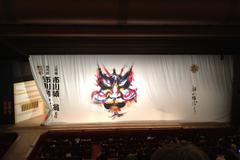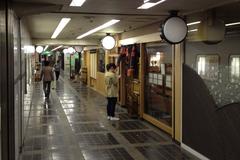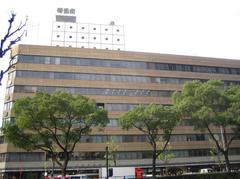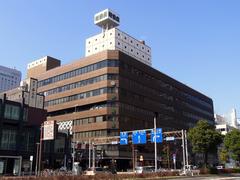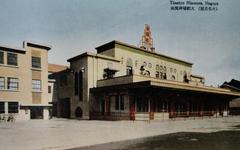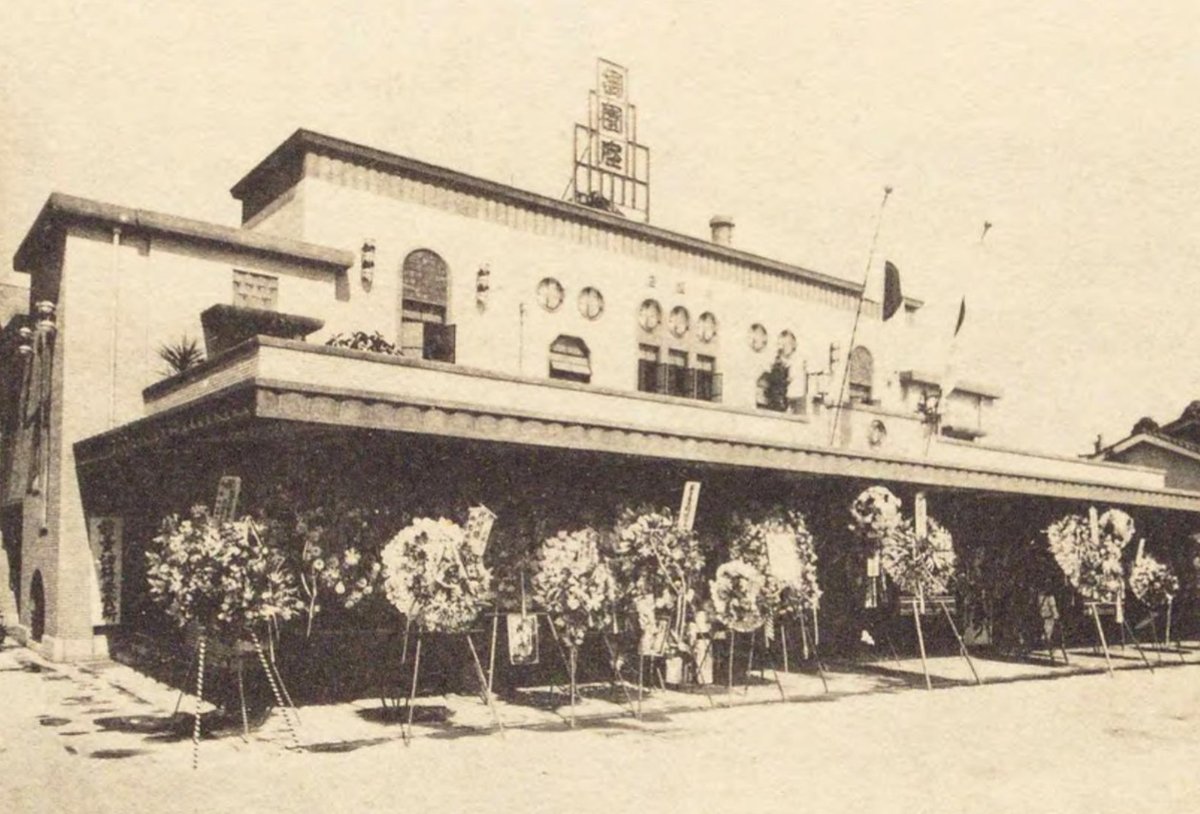
Misono-Za Nagoya: Comprehensive Guide to Visiting Hours, Tickets, and Historical Significance
Date: 14/06/2025
Introduction
Located in the lively center of Nagoya, Misono-Za is a premier destination for lovers of Japanese performing arts and history. Renowned as one of Japan’s leading kabuki theaters, Misono-Za offers a unique blend of tradition and contemporary flair. Its storied past, innovative architecture, and diverse performances make it an essential stop for both local and international visitors. This guide provides detailed information on Misono-Za’s historical evolution, visiting hours, ticketing, accessibility, architectural highlights, and nearby attractions, ensuring you have everything you need for a rewarding visit (official Misono-Za website; Nagoya Info).
Historical Overview: From Meiji Roots to Modern Marvel
Founding and Early Years (1895–1935)
Misono-Za was originally established in 1895 during the Meiji era, a period of profound social and cultural transformation in Japan. Its grand opening in 1897 featured notable kabuki actors, quickly positioning the theater as a cultural pillar in Nagoya. The original design echoed Tokyo’s Meiji-za, seating 1,516 guests and serving as a focal point for kabuki performances and shûmei (name succession) ceremonies—an integral tradition within kabuki culture (kabuki21.com).
Wartime Destruction and Rebuilding (1935–1963)
Though modernized in 1935, Misono-Za suffered extensive damage during the 1945 bombings of Nagoya. Demonstrating resilience, the theater was rebuilt by 1947. Another major fire in 1961 led to a 1963 reopening with a modern office building facade, reflecting postwar architectural trends. The theater’s enduring legacy as a hub for kabuki and other performing arts continued unbroken (samurai-archives.com).
Modernization and the New Misono-Za (2013–Present)
Misono-Za closed for redevelopment in the early 2010s and reopened in 2018 with a grand celebration. The new theater, designed by Kengo Kuma & Associates, features state-of-the-art facilities while honoring traditional motifs. It remains a vibrant venue for kabuki, musicals, comedy, and contemporary performances (kabuki21.com; Kengo Kuma & Associates).
Architectural Highlights
Façade and Design Innovation
Kengo Kuma’s design for the new Misono-Za draws inspiration from the Namako-kabe (sea cucumber wall) motif—characterized by black tiles and white grout—transformed here into a striking pattern of white metal stripes. This creates a luminous, modern exterior that pays homage to Japanese tradition while standing out in Nagoya’s Sakae district (World Architecture Community).
Interior Spaces
The interior, dominated by bold vermillion hues reminiscent of Shinto shrines, features wide corridors and contemporary amenities. The auditorium boasts around 1,300 seats, advanced acoustics, and a collection of artistically significant doncho (stage curtains), including the famous “Flowers at Mount Fuji” by Kataoka Tamako (Wikipedia).
Mixed-Use Complex
The theater occupies the 2nd to 6th floors of a 40-story tower—Misonoza Tower—which integrates retail, dining, and residential spaces, ensuring visitors have access to a variety of amenities (3D Archi Designer).
Visiting Misono-Za: Hours, Ticketing, and Access
Operating Hours
- Box Office: Typically open 10:00 AM–6:00 PM on performance days.
- Theater Access: Doors open roughly one hour before performances start.
- Performance Schedules: Vary by event—always confirm via the official website before visiting.
Ticket Information
- Booking: Tickets can be purchased online, at the box office, or through authorized agencies. Early reservations are recommended for popular shows.
- Pricing: Varies by performance and seating, typically ranging from ¥4,000 to ¥15,000.
- Language Support: Limited English support is available online; some performances may offer English subtitles or guides (MATCHA).
Accessibility
- Fully barrier-free with ramps, elevators, accessible restrooms, and wheelchair seating (advance reservation advised).
- Universal signage in Japanese and English.
- Hearing assistance and staff support available upon request.
Getting There
- Location: 1-6-14 Sakae, Naka-ku, Nagoya, Aichi Prefecture.
- Public Transport: Short walk from Fushimi Station (Higashiyama and Tsurumai Lines); about 10 minutes from Nagoya Station by subway.
- Sightseeing Bus: Me-guru Nagoya Sightseeing Route Bus stops nearby, ideal for integrating Misono-Za into a broader itinerary (MATCHA).
Facilities, Amenities, and Performance Experience
- Auditorium: Comfortable seating for ~1,300 guests, excellent sightlines, and superior acoustics.
- Café & Restaurant: On-site dining for pre-show meals and intermission refreshments.
- Souvenir Shop: Exclusive merchandise, kabuki goods, and Nagoya specialties.
- Cloakroom: Luggage and coat storage available.
- Etiquette: No photography or recording during performances. Smart casual attire is recommended, and traditional Japanese attire is welcomed.
Surrounding Attractions and Cultural Opportunities
Nearby Sites
- Oasis 21: Futuristic shopping and entertainment complex with panoramic city views (Nagoya Info).
- Nagoya City Science Museum: Notable for its planetarium, ideal for families.
- Noritake no Mori: Museum and park celebrating the famed ceramics brand (MATCHA).
- Nagoya Castle & Osu Shopping District: Easily accessible for a full day of cultural exploration.
Dining
The Sakae district offers a wide range of restaurants serving Nagoya specialties such as miso katsu and hitsumabushi. Advance reservations are recommended for popular venues on performance nights.
Misono-Za’s Role in Cultural Heritage and Community
- Preservation: Hosts prestigious shûmei ceremonies and performances by leading kabuki actors, ensuring cultural traditions remain vibrant (kabuki21.com).
- Innovation: Commissioning new works and collaborating with international artists to keep programming fresh and relevant.
- Education: Runs workshops, lectures, and backstage tours for schools and visitors, fostering cultural literacy.
- Community Engagement: Serves as both a performance venue and a gathering place, with lobbies and public spaces designed for interaction and seasonal events.
Seasonal Tips and Best Times to Visit
- Spring & Autumn: Mild weather and local festivals make these seasons ideal for travel.
- Summer: Hot and humid; plan for indoor activities.
- Winter: Cold but rarely snowy; comfort is ensured within the modern theater (Agate Travel).
- Special Events: Check the calendar for performances during Japanese holidays and festivals.
Practical Tips for International Visitors
- Language: Most performances are in Japanese; inquire about subtitles or guides.
- Payment: Major credit cards accepted, but some cash may be needed.
- Children: Welcome at many shows, but confirm age policies.
- Luggage: Use the cloakroom for large bags.
- Dress Code: Smart casual; traditional attire encouraged.
Frequently Asked Questions (FAQ)
Q: What are Misono-Za’s visiting hours?
A: The box office is open from 10:00 AM to 6:00 PM; theater doors open about an hour before performances.
Q: How do I buy tickets?
A: Online, at the box office, or via authorized agents. Early booking is best.
Q: Is the theater accessible?
A: Yes—wheelchair seating, accessible restrooms, and staff assistance are all available.
Q: Are there English-language supports?
A: Some performances offer English subtitles or guides; check the schedule in advance.
Q: Can I take photos?
A: Only in the lobby and public areas—never during performances.
Visuals and Interactive Elements
- Explore high-quality images of the theater’s façade and interior on the official website.
- Interactive maps and virtual tours are available online for planning your visit.
Booking and Contact Information
- Official Website: Misono-Za Official
- Tourist Information: Nagoya Info
- General Travel Guide: MATCHA Japan Travel Guide
- Architecture Details: Kengo Kuma & Associates, 3D Archi Designer
Conclusion
Misono-Za stands as a living testament to Nagoya’s dynamic blend of heritage and innovation. Whether you’re drawn by the grandeur of kabuki performances, the architectural marvels of Kengo Kuma, or the vibrant Sakae district surroundings, your visit to Misono-Za promises a memorable immersion in Japanese culture. Plan ahead for tickets, check performance schedules, and explore the many attractions nearby to make the most of your trip.
Call to Action
For the latest updates, ticketing, and exclusive content, download the Audiala app and follow us on social media. Explore our related guides on Nagoya’s historical and cultural sites to enrich your travel adventure.
Sources
- kabuki21.com
- Nagoya Info
- Kengo Kuma & Associates
- 3D Archi Designer
- Misono-Za Official
- MATCHA
- World Architecture Community
- Wikipedia
- Agate Travel
- Evendo

